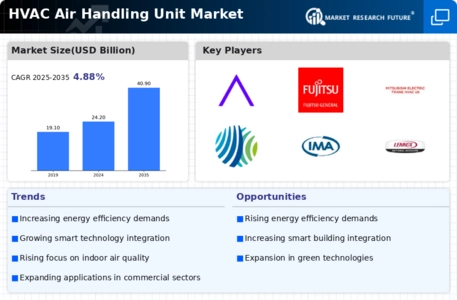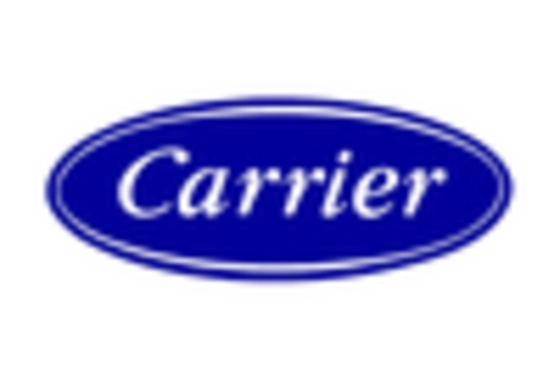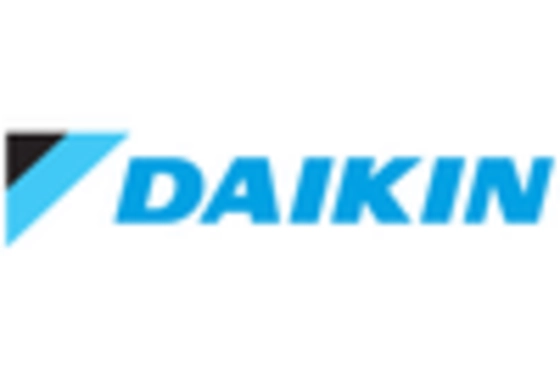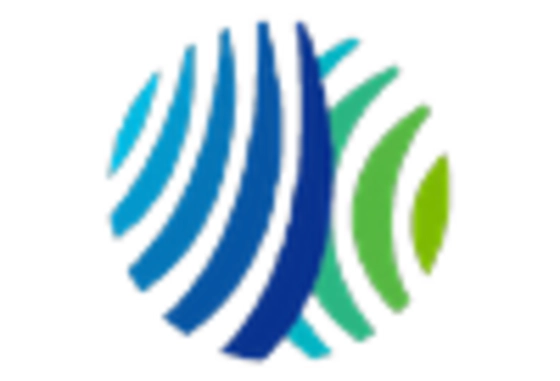Regulatory Standards and Compliance
Regulatory standards and compliance requirements are playing a crucial role in shaping the HVAC Air Handling Unit Market. Governments worldwide are implementing stricter regulations aimed at reducing emissions and improving energy efficiency in HVAC systems. These regulations often necessitate the adoption of advanced air handling units that meet specific performance criteria. As a result, manufacturers are compelled to innovate and enhance their product offerings to comply with these standards. The HVAC Air Handling Unit Market is thus witnessing a shift towards more sustainable practices, as companies strive to align with regulatory expectations while also catering to the growing consumer demand for environmentally friendly solutions.
Rising Demand for Energy Efficiency
The HVAC Air Handling Unit Market is experiencing a notable shift towards energy-efficient solutions. As energy costs continue to rise, consumers and businesses are increasingly seeking systems that minimize energy consumption while maintaining optimal performance. This trend is further supported by government initiatives promoting energy efficiency, which often include incentives for upgrading to more efficient HVAC systems. According to recent data, energy-efficient air handling units can reduce energy usage by up to 30%, making them an attractive option for both new constructions and retrofitting projects. Consequently, manufacturers are focusing on developing advanced technologies that enhance energy efficiency, thereby driving growth in the HVAC Air Handling Unit Market.
Expansion of Construction Activities
The ongoing expansion of construction activities across various sectors is significantly influencing the HVAC Air Handling Unit Market. As urbanization accelerates, there is a corresponding increase in the demand for efficient HVAC systems in residential, commercial, and industrial buildings. The construction of new facilities, particularly in emerging markets, is expected to drive the demand for advanced air handling units. Recent statistics suggest that the construction sector is projected to grow at a compound annual growth rate of 5% over the next five years, which will likely bolster the HVAC Air Handling Unit Market as new buildings require sophisticated air handling solutions.
Increased Focus on Indoor Air Quality
The emphasis on indoor air quality (IAQ) has become a pivotal driver in the HVAC Air Handling Unit Market. With growing awareness of the health impacts associated with poor air quality, consumers are prioritizing systems that effectively filter and circulate clean air. This trend is particularly pronounced in commercial spaces, where regulations often mandate specific IAQ standards. The HVAC Air Handling Unit Market is responding by integrating advanced filtration technologies and air purification systems into their products. Data indicates that improved IAQ can lead to a 20% increase in productivity in office environments, further incentivizing businesses to invest in high-quality air handling units.
Technological Innovations in HVAC Systems
Technological innovations are reshaping the HVAC Air Handling Unit Market, with manufacturers increasingly adopting smart technologies. The integration of IoT (Internet of Things) capabilities allows for real-time monitoring and control of air handling units, enhancing operational efficiency and user convenience. These advancements not only improve energy management but also facilitate predictive maintenance, reducing downtime and operational costs. As smart building technologies gain traction, the HVAC Air Handling Unit Market is likely to see a surge in demand for units equipped with these innovative features, reflecting a broader trend towards automation and connectivity in building management.



















Leave a Comment